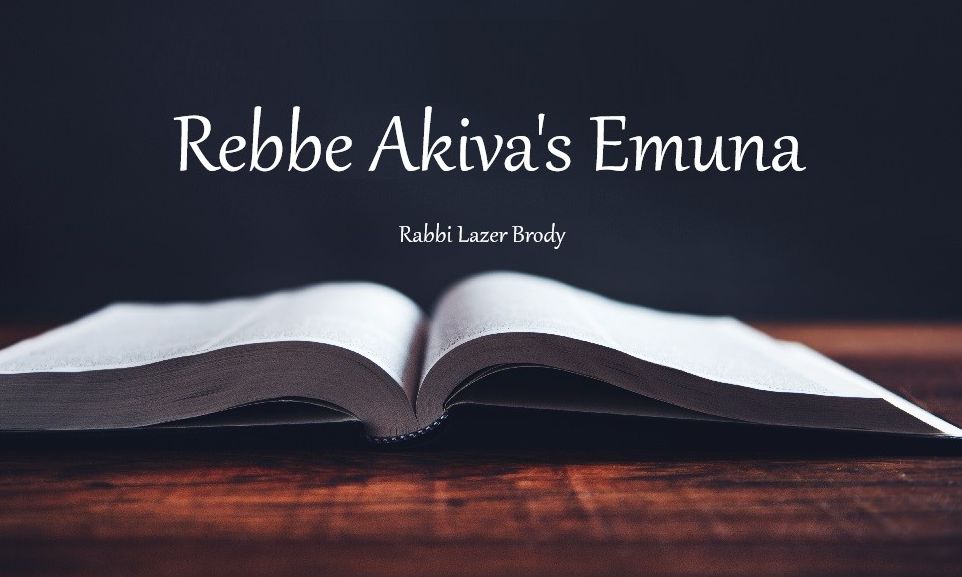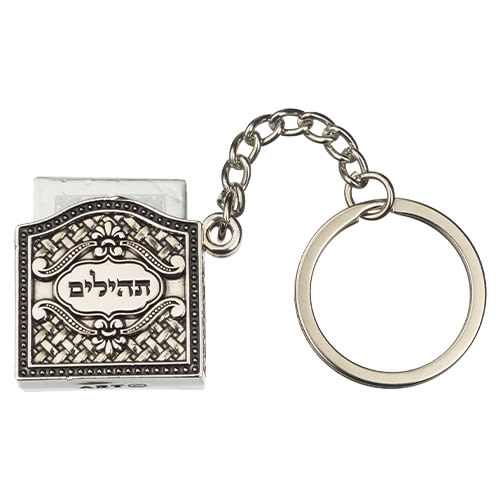
Rebbe Akiva’s Emuna
Why did Rebbe Akiva leave his two great teachers, the leading scholars Rebbe Yehoshua and Rebbe Eliezer, to spend 22 years learning from Nachum Ish Gamzu?

The Gemara in tractate Sanhedrin tells about Rebbe Eliezer “The Great” Ben Horkonos on his death bed. His most distinguished disciples came to be with him during his last moments on earth. Rebbe Eliezer turned to Rebbe Akiva and said, “You should have devoted more time as my understudy; I have taken from my rabbis a minuscule amount of their wisdom and knowledge, and you have taken from me even less than that. Akiva, you will die an excruciatingly horrid death.”
Was this a prophecy, a curse, or both?
The above Gemara passage brings up two bothersome questions: First, why didn’t Rebbe Akiva devote more time to learning from his two main teachers, Rebbe Yehoshua ben Chanania and Rebbe Eliezer ben Horkonos? The entire Talmud is based on their debates and they are the pillars of Talmudic Law. Yet, the Gemara tells us in tractate Chagiga that Rebbe Akiva spent twenty-two years as the understudy of Nachum Ish Gamzu. Nachum Ish Gamzu was a holy sage and a miracle worker, but to the best of my knowledge, only one halacha (law) in the entire Talmud appears in his name. So the second question is, why did Rebbe Akiva leave Rebbe Yehoshua ben Chanania and Rebbe Eliezer ben Horkonos to learn under Nachum Ish Gamzu for twenty-two years?
The answer to both questions, if I’m not mistaken, is simple: Nachum Ish Gamzu taught Rebbe Akiva emuna, that everything is from Hashem and all for the very best. Rebbe Akiva knew that without emuna, his Torah learning would be incomplete – it would be academic, but not engraved on the fibers of his soul. Rebbe Akiva knew that emuna is the vital component that enables a person to internalize his Torah, change him for the better, and facilitate him in getting closer to Hashem.
The Gemara shows how Rebbe Akiva’s emuna was stronger than that of his contemporaries, even those who some considered greater than him:
The first example is when the greats of the generation – Rabban Gamliel, Rabbi Elazar ben Azaria and Rabbi Yehoshua Ben Chanania – together with Rebbe Akiva – traveled up to Jerusalem. When they reached Mount Scopus, they rent their clothes, for the Holy Temple had already been destroyed. As they approached the Temple Mount, they saw a fox run out of the innermost chamber, the Holy of Holies. The great wise men wept, but Rebbe Akiva laughed.
“Why are you laughing?” they asked him.
Talmudically, answering a question with a question, he asked, “Why are you crying?”
The great wise men answered, “When foxes run in the place where only the High Priest may enter on Yom Kippur, isn’t it befitting that we cry?”
“That is why I laughed,” he answered. “I know two prophesies. The first, of the prophet Micah saying, ‘Because of you, Zion will be a plowed field. Jerusalem a ruin, and the Temple Mount a forest.’ The second of Zachariah saying, ‘Old men and women will yet rejoice in the streets of Jerusalem.’ Until I saw the first prophesy fulfilled, I feared the second would never happen. Now that I have seen the first prophesy come true, I know the second will materialize also.”
The others answered, “Akiva, you have consoled us! Akiva, you have consoled us!” Rebbe Akiva’s entire thought process was emuna-oriented; he knew that Hashem was doing everything for the best. Not even the leader of the generation, Rabban Gamliel, exhibited such a level of emuna.
That’s not the only instance. Let’s go back to the death bed Rabbi Eliezer ben Horkonos:
The Gemara tells that when Rebbe Eliezer became sick, his devoted students came to visit him. He said to them, “There is a fierce wrath in the world,” implying that Hashem was punishing him.
The students began to cry. That is, all except Rebbe Akiva, who was laughing.
“How can you laugh at a time like this?” they asked.
“Tell me,” countered Rabbi Akiva, again answering a question with a question, “why do you weep?”
They answered, “Shall we see witness a genuine scroll of Torah lie in pain, and not cry?”
“That’s exactly why I am laughing,” Rebbe Akiva responded. “As long as I saw that our teacher’s wine did not turn sour, his flax did not go bad, his oil did not spoil, and his preserves did not become rancid, I thought, Heaven forbid, that he might have received all his reward in this world, leaving nothing for the next. Now that I see his suffering, I rejoice, knowing that his reward will be given to him in the world to come.”
Hearing this, Rebbe Eliezer said to his prime student, “Akiva, have I neglected anything of the whole Torah? Why should I deserve even this suffering?”
Rabbi Akiva answered: “My master, you yourself have quoted the passage to us, ‘For there is not a just man upon earth who does good and does not sin.'”
So once again we see how Rebbe Akiva saw everything through eyes of emuna and all for the best, even when his prodigious teacher did not. We all know the story in tractate Berachot how Rebbe Akiva was on the road with his three possessions – a lantern, a rooster, and a donkey. In the early evening, he came to a village seeking lodging but no one took him in. Calmly, he told himself, “Whatever Hashem does is for the good.” He pitched camp on a nearby wooded hill. During the night a wind blew out his lamp so he couldn’t learn; a wildcat ate his rooster, so he lost his alarm clock; finally, a lion devoured his donkey so he lost his means of transportation. After every misfortune, Rebbe Akiva said in perfect emuna, “Whatever Hashem does is for the good.”
The following morning, he awoke to discover that during the night, Roman soldiers sacked the village that refused him lodging and murdered all the residents. If his candle burned, his rooster crowed or his donkey brayed, he too would have been killed. So, even before Rebbe Akiva knew that everything was for the best, he believed that “Whatever Hashem does is for the good.”
Let’s now flash forward to Rebbe Akiva’s death, as related in tractate Berachot: The Romans imprisoned and tried Rebbe Akiva for teaching Torah in public, a “criminal” act that they had outlawed. In the early evening hours, they tortured him to death, ripping off his skin with iron rakes in an unprecedentedly excruciating form of torture that no less than a Satan could improvise.
Rebbe Akiva reacted with a calm smile on his face, reciting the Shema during his final moments in the physical world. His students, who were forced to watch their beloved teacher being tortured, screamed in agony and yelled to him, “Our teacher, how can you stand this, and say Shema too?!”
Rebbe Akiva answered in complete composure, “The Shema requires us to love Hashem with all our souls, which I understood to be even if someone wants to take my soul. My entire life I asked myself if I’d really love Hashem even if my soul were being taken from me. Now that I at last have the opportunity to do so, why should I not be happy? As Rebbe Akiva said, “Hashem is One, his soul left his lifeless body when he said the word, “One”.
We now can understand why Rebbe Akiva spent 22 years learning what emuna really is from Nachum Ish Gamzu, who also accepted horrible tribulations with love. This is the emuna that no matter what, we know that everything is from Hashem and everything is for the best. Rebbe Akiva’s contemporaries knew the whole Torah by heart, backward and forward, but that didn’t have his emuna. We can therefore conclude that building true emuna must be a lifelong endeavor. Let’s get started.












Tell us what you think!
Thank you for your comment!
It will be published after approval by the Editor.